Are you missing out on obtaining key data and valuable insights from phone calls?
Many businesses invest heavily in digital marketing, yet they often overlook one of their most valuable sources of customer information – phone calls.
Every inbound call holds key data about customer intent, pain points, and buying decisions, but without the right tools, this information is not recorded, and key details that could be used to improve ROI and customer interactions are missed. Call tracking isn’t just about counting calls but understanding what happens during those conversations. It helps businesses see which marketing tactics drive the best leads, understand their customer needs and also use the data to improve client interaction and close more sales.
Below, we will explore how call-tracking software uncovers hidden patterns in customer conversations, helps businesses optimize marketing strategies, improves sales performance, and increases conversions.
If you are relying on guesswork instead of data, you’re leaving revenue on the table.
Summary
- Call tracking software helps businesses identify customer intent, lead quality, and sales opportunities.
- Understanding call data allows businesses to refine marketing strategies to improve customer interactions as well as ROI.
- Optimizing sales scripts based on call insights improves engagement and conversion rates.
- Using call-tracking data helps businesses make smarter decisions and increase revenue.
- AvidTrak Software is a best-in-business platform that not only is the most affordable platform but it also offers all the features needed for optimum call tracking results. AvidTrak features include advanced call-tracking insights, AI-powered analytics, zip code routing, real-time reporting, and all key advanced call-tracking features – all at affordable rates to help businesses turn phone calls into conversions and maximize their ROI.
Understanding the Power of Call Data Beyond the Basics
Most businesses use call tracking to determine the source of their incoming phone calls, but that’s just the beginning. The real value comes from analyzing call transcriptions, AI-powered call analytics, and customer interactions to uncover deeper insights.
These insights help businesses optimize their sales process, refine marketing strategies, and improve conversion rates.
Uncovering Intent Through Transcriptions and AI
Not all phone calls are equal. Some callers are just browsing, while others are ready to buy. But how can you tell the difference?
Call transcriptions and AI-powered call analytics help businesses analyze conversations at scale.
By identifying key phrases like “I need pricing,” “How soon can I book?” or “I’m ready to sign up,” AI can determine the intent behind a phone interaction. Sentiment analysis further helps by detecting the urgency or hesitation in a caller’s tone.
For example, if multiple calls contain words like “too expensive” or “not sure if it fits my needs,” that is a sign your pricing or messaging needs adjustment. On the flip side, when callers frequently ask about specific features, sales teams can highlight those in their pitches.
This level of phone call analytics data allows businesses to:
- Identify which callers are most likely to convert.
- Route high-intent leads to the best sales reps.
- Adjust advertising campaigns based on the language customers actually use.
Evaluating the Quality of Leads
A high volume of inbound calls sounds great, but if they don’t convert, they are just noise. Call tracking insights help businesses separate real opportunities from time-wasters.
Businesses can determine whether a lead is worth pursuing by analyzing average call duration, caller location, and key phrases.
Using tracking reports and advanced analytics, businesses can:
- Score leads based on intent and engagement
- Identify high-value calls that deserve immediate follow-up
- Improve marketing ROI by focusing on channels that bring in better-quality leads
Instead of wasting time on unqualified leads, sales teams can prioritize efforts where they matter most.
Identifying Customer Pain Points and Needs
Do you know what is frustrating your customers? Call tracking data has the answers.
Businesses can adjust their marketing campaigns, sales scripts, and product offerings by reviewing phone call transcripts and identifying common complaints or questions.
For example, an automotive sales process might reveal that callers frequently ask about financing options. If so, the dealership could update its advertising strategy to highlight financing promotions.
Similarly, e-commerce businesses might discover customers hesitate due to high shipping costs— an insight that could alert the business to offer a shipping discount or special offer.
By tapping into conversation intelligence solutions, businesses can use data-driven insights to make smarter decisions and turn more conversations into valuable conversions.
Converting Insights into Actionable Strategies
Having call recording insights is only helpful if businesses know how to act on them.
Once you have identified customer intent, lead quality, and pain points from phone call analytics data, the next step is applying these insights to improve sales performance, marketing strategies, and overall customer interactions.
Here is how:
1. Optimizing Sales Scripts
A strong sales process starts with understanding what works.
Sales call analytics from tracking reports help businesses refine their sales scripts by highlighting what drives successful conversions.
For example, if incoming calls include questions about product pricing, sales teams can proactively address cost concerns earlier in the conversation.
Or if customers frequently hesitate, call tracking software can pinpoint the objections that need stronger responses. Businesses can standardize the best-performing responses by analyzing successful sales calls and training teams accordingly.
With accurate reporting on common customer concerns, sales teams can create natural, relevant, and persuasive scripts.
2. Personalizing Customer Interactions
A generic sales pitch doesn’t work. Customers expect businesses to understand their needs—and that is where call-tracking data makes a difference.
Businesses can personalize follow-ups based on past conversations by analyzing phone call data and transcripts. Custom reports on caller location, average lead score, and previous inquiries allow sales reps to customize discussions with callers.
For instance, if a caller previously asked about a specific service, the follow-up should focus on that rather than a generic pitch. E-commerce businesses can use insights from conversation analytics reports to recommend relevant products based on past phone interactions.
3. Targeting High-Intent Leads
Not every caller is ready to buy.
The key is prioritizing leads with strong buying signals and ensuring they get the correct follow-up.
Using AI-powered call analytics, businesses can flag high-intent calls based on keywords like “I want to book” or “How do I get started?” These leads should be:
- Routed directly to experienced sales reps
- Marked for immediate follow-up to close the deal before interest fades
- Included in targeted advertising campaigns to reinforce their decision
By focusing on the right leads and not wasting time on unqualified ones—sales teams can improve efficiency and close more deals.
4. Improving Lead Nurturing
Not every lead converts immediately. Some need more time, additional information, or a gentle reminder.
Call tracking software helps businesses set up automated follow-ups and nurture potential customers over time. If a caller didn’t book an appointment, a Google Ads retargeting campaign can keep your brand top-of-mind.
Businesses can schedule outbound campaigns for leads who showed interest but needed time to decide. Integrating tracking services with a CRM allows businesses to trigger personalized emails or text reminders based on call data.
Businesses can turn hesitant prospects into valuable conversions over time by using data-driven insights to create structured lead-nurturing workflows.
Call Tracking Data for Marketing Optimization
Marketing success isn’t just about generating leads and bringing in the right leads.
Businesses can fine-tune their advertising strategy by analyzing incoming calls and allocating budgets more effectively. Here’s how:
Refining Ad Campaigns
Businesses invest in search ads, social media promotions, and display advertising, but not every campaign delivers quality leads. Call tracking software like AvidTrak helps companies determine which advertising channels attract engaged callers more likely to convert.
Optimizing Landing Pages
A well-structured landing page can turn visitors into customers—but how do businesses know if a page is performing well? Phone call tracking provides an answer by linking incoming phone calls to specific landing page elements.
Using dynamic number insertion (DNI), businesses can:
- Identify which landing pages drive the most phone interactions.
- Test different call-to-action (CTA) placements to see what encourages more calls.
- Simplify form fields if visitors call instead of filling out online forms.
Geographic Targeting and Campaign Segmentation with AvidTrak
Location matters when it comes to marketing performance.
Businesses operating in multiple regions need to know which areas generate high-quality phone calls and how to route those calls efficiently. AvidTrak’s geo-based call tracking and routing tools help businesses optimize advertising spend, improve response times, and increase conversions.
With AvidTrak’s geographic call tracking, businesses can see exactly which locations generate the most valuable conversions. This helps companies to fine-tune their ad targeting for Google Ads, social media, and offline campaigns. Here’s how different industries can benefit:
- Local service providers (e.g., HVAC companies, law firms, home services, and automotive sales teams) can allocate their ad budgets to cities or zip codes with higher conversion rates.
- Insurance companies can use caller location data to adjust advertising efforts in areas where demand for policies is highest.
- E-commerce businesses can track geographic call trends to see which regions drive the most inbound calls from potential buyers.
AvidTrak’s call tracking software not only identifies the best locations for marketing but also routes calls efficiently to ensure better customer service.
- Zip Code Routing – AvidTrak automatically directs the call to the closest business location when a caller enters a zip code, making it easier to connect customers to the right office.
- Area Code-Based Routing – Calls are forwarded based on the caller’s area code, ensuring that customers speak with a regional representative.
- Time-Based Call Routing – Businesses with multiple offices across different time zones can ensure that incoming calls are not missed and handled by an after hours team.
- Alternate Location Forwarding – AvidTrak automatically reroutes the call to another location or call center if a business location is unavailable, reducing missed opportunities.
These tracking services allow businesses to respond faster, improve customer experiences, and avoid wasted advertising spend in areas that don’t convert.
Real-Time Insights for Instant Adjustments
Marketing and sales campaigns shouldn’t rely on delayed data.
Real-time call tracking insights allow businesses to adapt on the spot, ensuring better lead management, smarter ad spending, and improved sales performance. AvidTrak’s live call monitoring, dynamic reporting, and instant alerts help businesses adjust as calls happen, preventing wasted opportunities.
Live Call Monitoring and Whisper: Coach Sales Reps in Real-Time
A missed opportunity on a sales call can mean losing a high-value customer.
AvidTrak’s live call monitoring feature allows managers to listen in on active calls and provide real-time coaching without interrupting the conversation. With the Call Whisper feature, supervisors can guide sales reps during live calls without the customer hearing, helping reps handle objections, close deals, or provide better service.
For businesses that rely on customer service representatives or sales teams, these features ensure higher call success rates and better customer experiences.
Dynamic Campaign Adjustments: Optimize Ads in Real Time
Not all advertising campaigns deliver the same results, and waiting weeks to adjust them can be costly.
AvidTrak’s tracking software allows businesses to see which campaigns bring in quality leads and which need immediate changes.
If search ads targeting one region are underperforming, businesses can adjust their targeting settings immediately to focus on high-converting locations. Similarly, companies can pause or tweak the campaign if an advertising source generates low-quality inbound calls before wasting more money.
With detailed insights updated in real-time, businesses can make data-driven decisions and avoid advertising expenses that don’t generate valuable conversions.
Immediate Performance Feedback: Stay Ahead of Issues
Instead of waiting for weekly reports, businesses using AvidTrak’s real-time alerts can respond instantly to performance issues.
Get instant lead alerts as soon as a high-value lead calls so that sales teams can follow up immediately. With spam & robocall detection, you can block automated robocalls to prevent them from distorting call analytics and wasting time.
Accurate reporting and real-time tracking give businesses the flexibility to make quick changes, save ad spend, and improve marketing performance instantly.
The Role of Call Tracking Insights in Long-Term Strategy Development
Short-term fixes help optimize performance, but long-term success depends on understanding customer behavior over time.
AvidTrak’s call-tracking insights provide businesses with data to refine their customer journey, marketing strategies, and retention efforts.
Refining Customer Journey Mapping
Businesses can track how customers move through different touchpoints, from the first interaction to the final sale. AvidTrak’s tracking reports highlight which marketing efforts drive conversions and where customers drop off, helping businesses fine-tune their advertising strategy for better results.
Developing Future Marketing Strategies
Long-term call analytics reveal trends in customer demand, seasonal patterns, and high-performing marketing channels. Businesses can use this data to adjust ad budgets, refine campaign messaging, and plan future promotions that align with real customer behavior.
Improving Customer Retention
Analyzing ongoing phone conversations, businesses can spot recurring concerns, frequently requested features, and service gaps.
Acting on this data improves customer experiences and keeps existing customers engaged—leading to higher retention rates and long-term business growth.
How AvidTrak Helps With Call Tracking Insights
To truly understand customer behavior and maximize marketing efforts, businesses need more than just basic call tracking.
AvidTrak provides in-depth analytics, AI-driven insights, and seamless integrations to help businesses effectively track, analyze, and act on every call.
Here’s how AvidTrak helps businesses get the most out of their call data:
1. Comprehensive Call Analytics
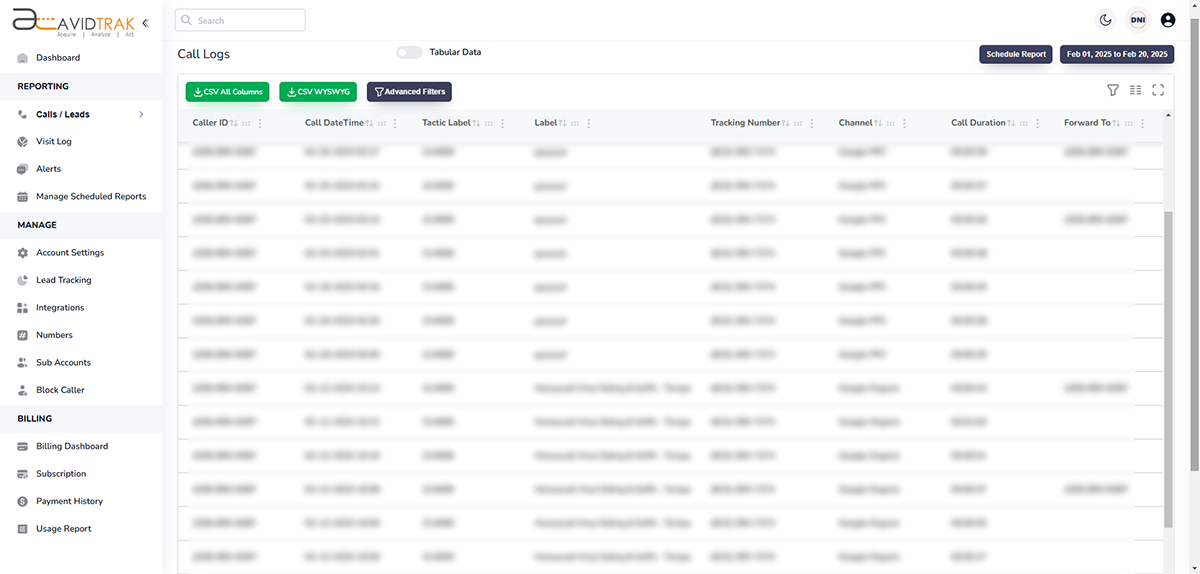
AvidTrak goes beyond basic call tracking by delivering detailed insights into customer conversations, lead quality, and marketing performance.
Businesses can track which marketing channels drive the best phone call conversions, which sales calls lead to actual revenue, and which advertising sources bring in high-value leads. This data helps businesses make more intelligent decisions about ad spend and campaign strategies.
2. Advanced AI and Transcription Features
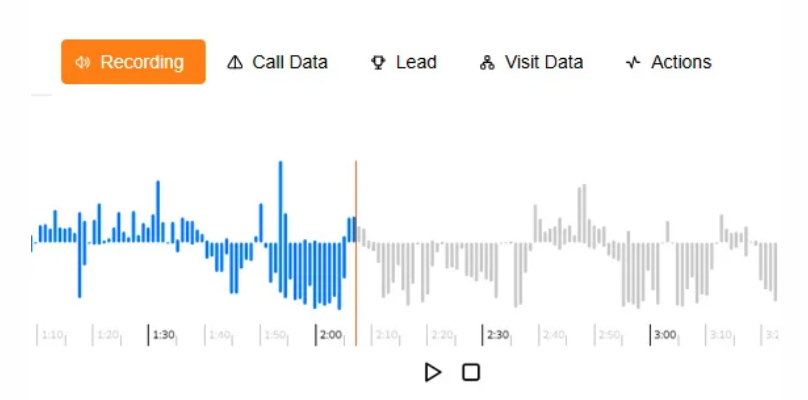
AvidTrak’s AI-powered transcription converts conversations into searchable text, allowing businesses to detect customer intent based on key phrases.
Businesses can spot objections, identify common pain points, and improve lead qualification by analyzing conversation patterns. This helps sales teams refine their approach and close more deals by tailoring their responses to real customer concerns.
3. Real-Time Reporting and Alerts
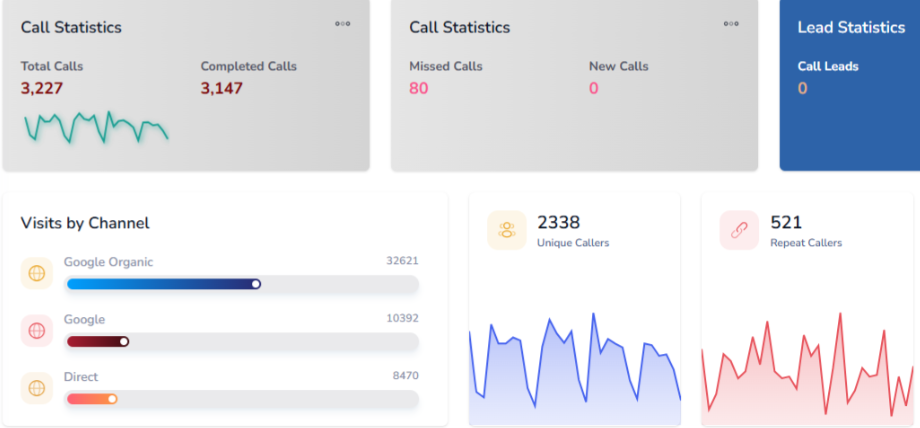
Instead of waiting for weekly reports, businesses using AvidTrak can get instant notifications and real-time tracking data. This means immediate lead alerts for high-value calls, live monitoring of ad performance, and quick campaign adjustments to stop wasted marketing spend.
Accurate reporting allows businesses to improve their advertising efforts on the spot and ensure that marketing budgets are used efficiently.
4. Seamless Integrations
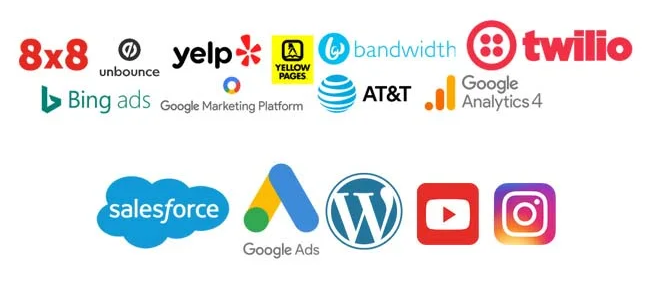
AvidTrak integrates with major marketing and CRM platforms, such as Google Ads, Google Analytics 4, Bing Ads, HubSpot, and Zoho CRM.
Businesses can track phone call conversions alongside online conversions, sync call tracking data with customer journey mapping, and measure the full impact of their marketing campaigns. These integrations help businesses see how phone calls fit into their Comprehensive Call Analyticsbroader business processes.
5. Customizable Features
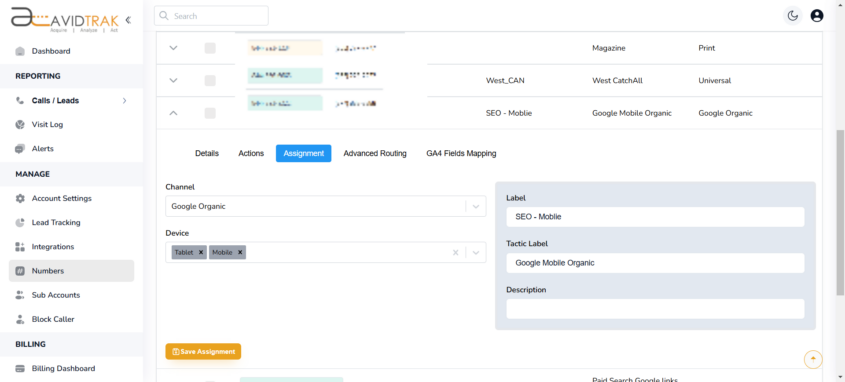
Every business has unique tracking needs, and AvidTrak offers extensive customization at no extra cost. Unlike other call tracking providers that charge for custom setups, AvidTrak gives businesses complete control over tracking, routing, and analyzing calls without additional fees.
Businesses can use IVR call routing to direct calls based on customer intent, ensuring callers reach the correct department or agent instantly.
Geo-based call routing automatically connects customers to the nearest branch, improving response times and local engagement. Dynamic number insertion (DNI) allows businesses to track calls from different advertising channels, making measuring marketing effectiveness across platforms easy.


